WATER KIMCHI may not really sound appetizing but it is absolutely refreshing and delicious. And it’s quite simple to make.

Water kimchi really doesn’t involve a lot of ingredients but it comes out so fabulous – so refreshing and belly cleansing deliciousness. There’s a phrase that Koreans use to describe a taste sensation like this – “속이 확 뚤린다” – which basically means it feels like my stomach is totally clearing. I guess a similar feeling would be how you feel when you drink sparking water or any bubbly drinks. You can feel it reach the deep area of your stomach in a very clearing way.
Korean Water Kimchi (mul kimchi 물김치) is traditionally served as part of a Korean meal as banchan (side dish) but recently, especially in more fancy restaurants, they are served almost as apértif – as a way to stimulate your appetite.

Served as part of a meal, I feel it acts as a way to cleanse your palette in between heavily fatty or spicy dishes.
By the way, this recipe was done at late afternoon time and so I decided to make it outside since that would give me more day light. Some pics may look darker than usual but better dark than later, right?? HAHAHA
OH! OH!! NEWS FLASH!! I have just uploaded my very FIRST recipe video!! I am not 100% happy with it but it’s my very first one so hope you are going to be gentle with me about it… 😍 Video is at the very end of this post.
Before we go onto the recipe, I want to clarify exactly what Mul Kimchi is. Because it’s actually a very general term and that includes many different kinds. First, “mul” literally means “water”. And according to the Korean Food Science and Technology Dictionary, Mul kimchi has radish and Korean napa cabbage as its main ingredients but can have many other vegetables. It is made by adding lightly salted brine that is not spicy.
Here are some common kinds of water kimchi (mul kimchi) :
- Dongchimi (동치미) – made from whole radishes (winter)
- Nabak Kimchi (나박김치) – made from cut radish and napa cabbage. Lightly colored with fine red chili powder (spring, summer)
- Jang Kimchi (장김치) – different vegetables seasoned with soy sauce (jang) only (summer)
- Yeolmu Mul kimchi (열무물김치) – made with young radish greens (summer)
- Sangchoo Mul Kimchi (상추물김치) – made with lettuce (summer)
- Oi Mul Kimchi (오이 물김치) – made with cucumbers (summer)
So I have to say, my Water Kimchi recipe here is sort of in between a Dongchimi and Nabak kimchi but is probably the most popular version in modern Korean cuisine because it is simple to make and yet captures the best flavors of Mul Kimchi. Now, normally, the liquid of Korean water kimchi made with radish is colorless but I decided to go a little different and added watermelon radish for some pretty color. And boy, was I glad I did!! The color came out such a pretty pink and the watermelon radish tasted quite crunchy and delicious too! I LOVE this recipe.
** PREVENT SLIMY KIMCHI!! — Please follow the recipe closely and be careful not to leave the kimchi in too warm a temperature in the summer to prevent it from getting slimy. Read more about it HERE on how to prevent your water kimchi from getting slimy or jelly-like.
Korean Water Kimchi (Mul Kimchi) with Watermelon Radish
Makes: 2 L/0.5 GL Cooking Time: 25 min Difficulty: EASY
Ingredients
- 1 large Korean radish (2 lbs)
- 1 watermelon radish (substitute red radish for color)
- 1 bunch water dropwort (minari) – optional
- 1/2 Korean pear
- 1/2 yellow onion
- 6 garlic cloves
- 3-4 Korean green chili peppers (or 2-3 Jalapeno peppers)
- 3-4 Korean red chilis or other mild chili peppers like Piquillo de Lodosa
- 2 fresh ginger slices (1/8 inch thick)
- 1 bunch green onions
- 2 liter (1/2 gallon) water
- 4 Tbsp Korean Solar Sea Salt (Cheonilyeom 천일염)
- 1 Tbsp sugar
- 1 large plastic container (4 liter/1 gallon size)
- Peel and cut Korean radish into 1.5 in (1.75 cm) thick chunks –> cut each thick round chunk vertically (left in pic) into 0.5 in (1.2 cm) thick slices –> and then each slice into 0.5 in (1.2 cm) thick batons (right top).
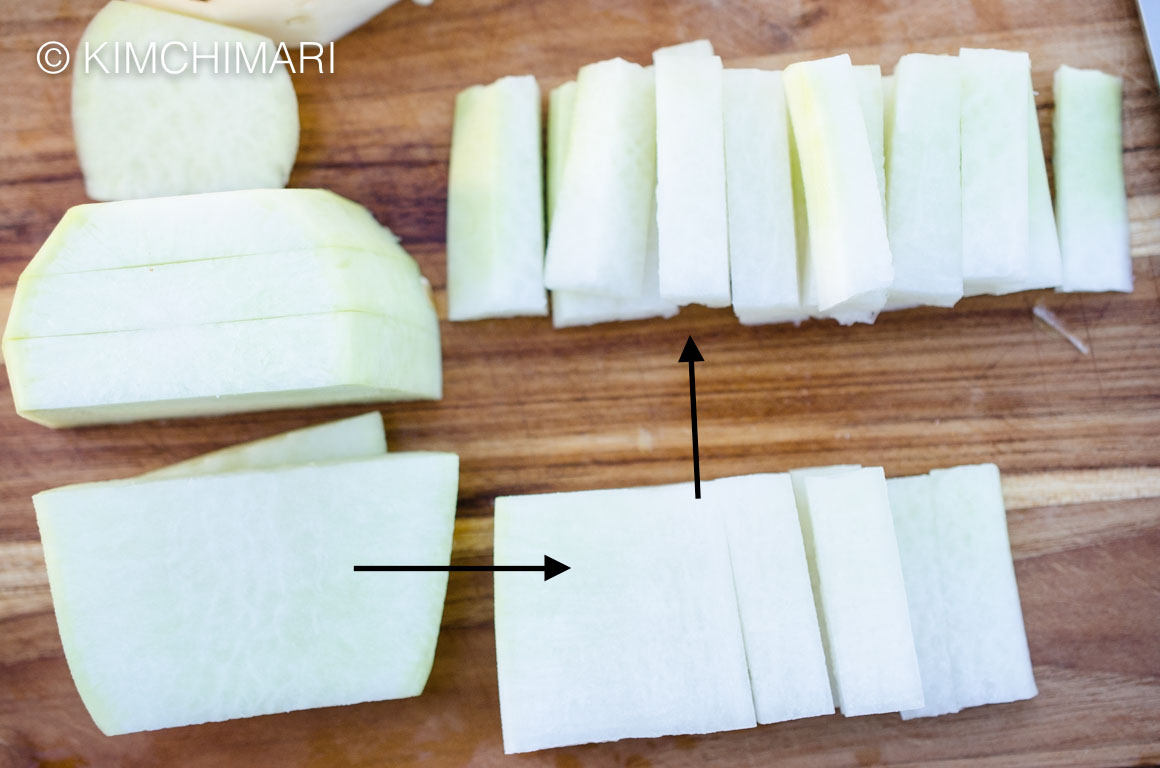
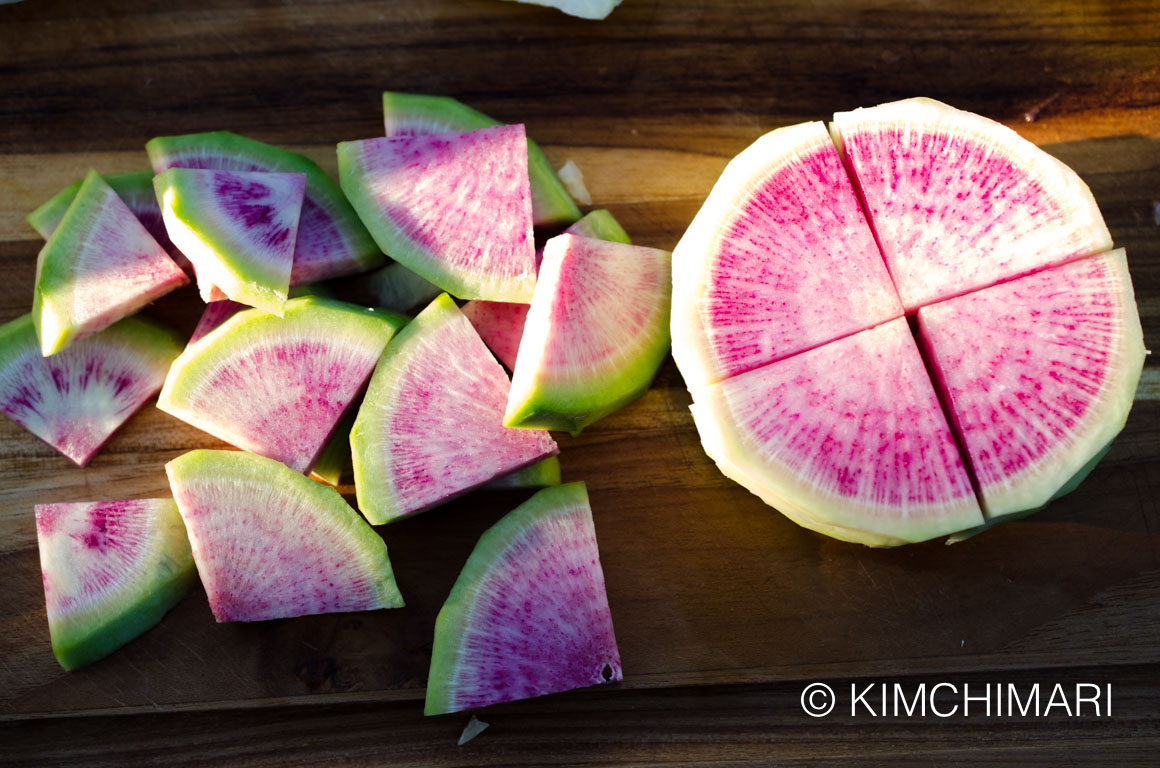
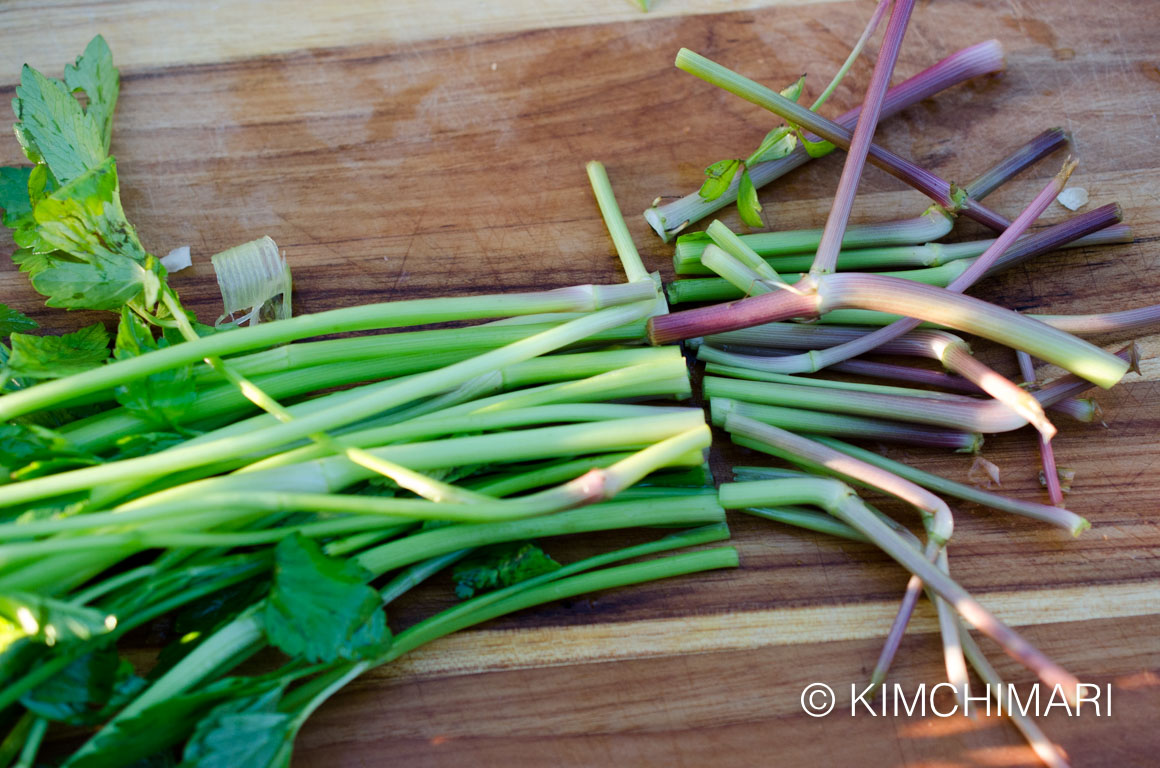
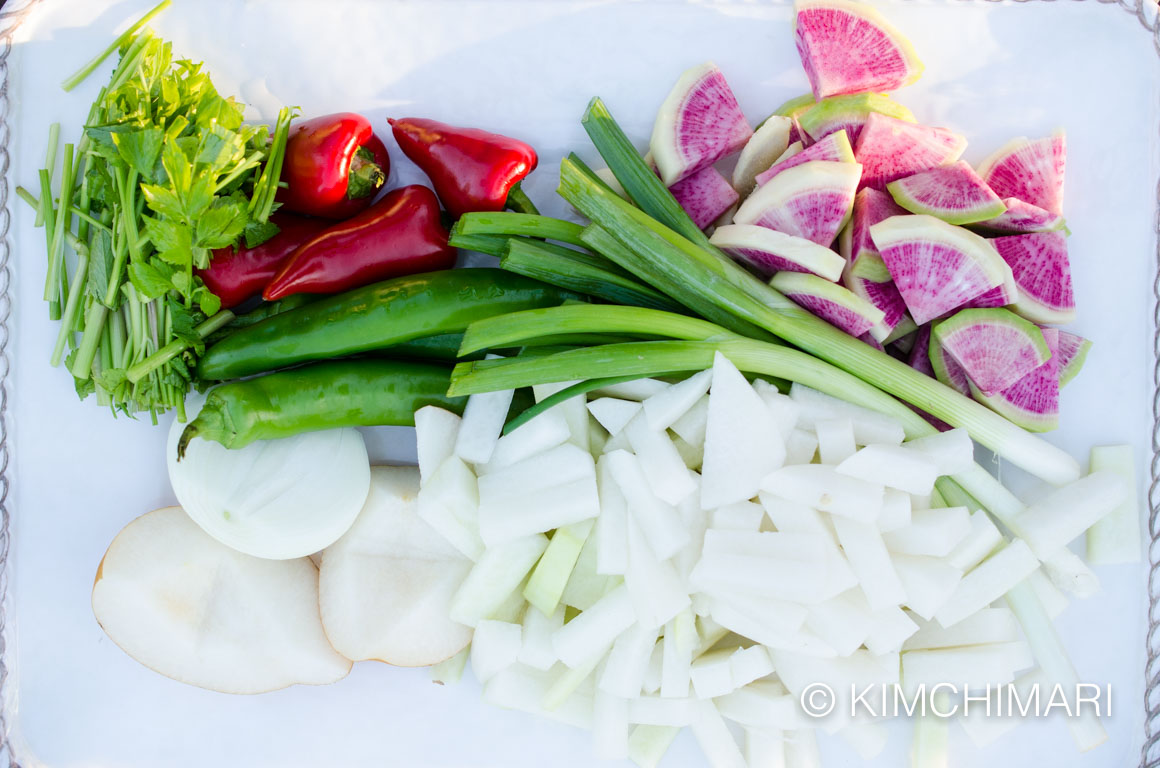


Serving Tips (Added 9/7/17)
- At time of serving, add 1/2 tsp sugar or more to taste per 1 cup of water mul kimchi.
Water Kimchi (Mul Kimchi)
Ingredients
- 1 large Korean radish
- 1 watermelon radish
- 1 bunch water dropwort (minari) – optional
- 1/2 Korean pear
- 1/2 yellow onion
- 6 garlic cloves
- 3-4 Korean green chili peppers (or 2-3 Jalapeno peppers)
- 3-4 Korean red chilis or other mild chili peppers like Piquillo de Lodosa
- 2 fresh ginger slices (1/8 inch thick)
- 1 bunch green onions
Kimchi water
- 2 liter (1/2 gallon) water
- 4 Tbsp Korean Solar Sea Salt (Cheonilyeom 천일염)
- 1 Tbsp sugar (for now)
- 1 large plastic container (4 liter / 1 gallon size)
Instructions
- Peel and cut 1 large Korean radish into 1.5 in (1.75 cm) thick chunks –> cut each thick round chunk vertically into 0.5 in (1.2 cm) thick slices –> and then each slice into 0.5 in (1.2 cm) thick batons
- Peel and cut 1 watermelon radish into slices (approx 1/4 in or 0.5 cm thick) and then into quarters.
- Core 1/2 Korean pear and peel and cut 1/2 yellow onion.
- Wash and cut 1 bunch water dropwort into 2 in (5cm) lengths. Discard leafy parts on top and also bottom thick stems that are too fibrous. Wash and take off stems from 3-4 Korean green chili peppers and 3-4 Korean red chilis or other mild chili peppers like Piquillo de Lodosa.
- Prepare 2 fresh ginger slices and6 garlic cloves. Cut 1 bunch green onions into 1/2 lengths.
- Place all of the ingredients in container in no particular order but would be good to have the bigger items like pear and onion at the bottom.
- Mix 4 Tbsp Korean Solar Sea Salt and 1 Tbsp sugar in 2 liter (1/2 gallon) water. Stir until everything is well dissolved.
- Pour salt sugar water on top of the Kimchi ingredients prepared in container.
- Water kimchi is now ready for fermentation. LEAVE at room temperature for 1 day. On a HOT summer day, you may want to put in the fridge sooner. Refrigerate for 2-3 days and it will be fabulous!! As it ferments, you will taste somewhat of a fizzy taste which is just so awesomely refreshing.
Tips & Notes:
- At time of serving, add about 1/2 tsp sugar (adjust to taste) per 1 cup of water kimchi
- Weight of my radishes (both regular and watermelon radish) was about 1 kg.
- Water or Mul Kimchi is best served COLD straight from the fridge. You can also add 1-2 ice cubes right before serving.
- If you like things sweeter, you can add a little more sugar (1/2 tsp per 1 cup) right before serving. I made the recipe on the less sweet side so that you can adjust to your liking.
- Use leftover water kimchi liquid to make the most delicious cold soup for noodles. You can make naengmyeon noodle soup with it. Just add some beef or chicken broth to it.
Nutrition Information:
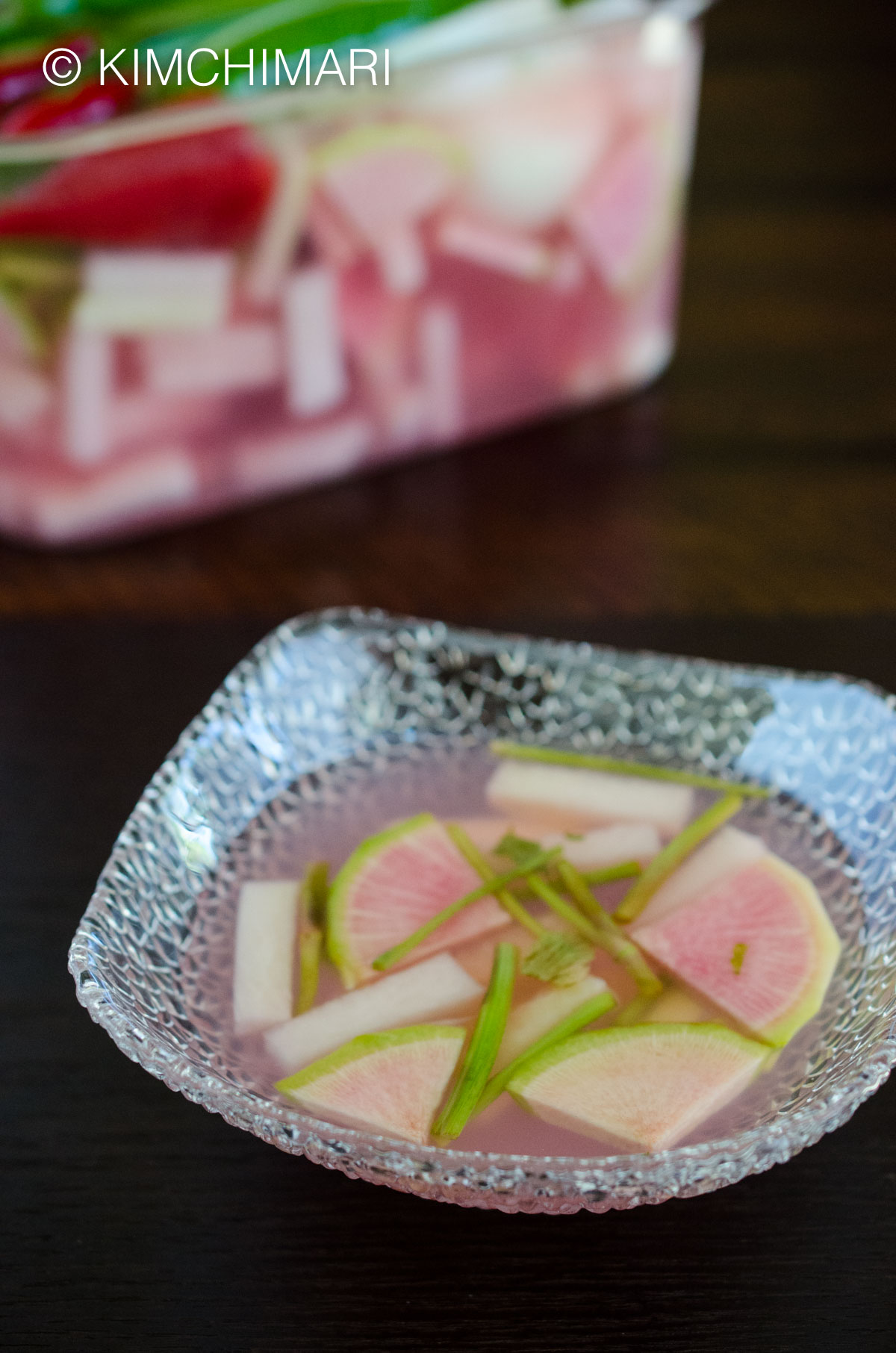
Notes
- PLEASE use Korean Cheonilyeom Solar Sea Salt for Kimchi. If you don’t have a Korean grocery nearby, you can find it online or find under Basic Korean Seasonings category in my Amazon store. If you are going to use other sea salt, please add to taste as they tend to make things more salty than Korean salt.
- Total weight of my radishes (regular and watermelon radish) was about 1 kg or 2.2 lbs.
- Water or Mul Kimchi is best served COLD straight from the fridge. You can also add 1-2 ice cubes right before serving.
- If you like things sweeter, you can add a little more sugar (1/2 tsp per 1 cup) right before serving. I made the recipe on the less sweet side so that you can adjust to your liking.
- Use leftover water kimchi liquid to make the most delicious cold soup for noodles. You can make naengmyeon noodle soup with it. Just add some beef or chicken broth to it and season with vinegar, sugar and soy sauce.
- To add extra fizziness, sometimes my mom adds sprite or 7 up before servings. Probably 1-2 Tbs or so to each serving.
- This kimchi should last up to a month or so in the fridge – especially if you put it in the fridge a little early (leave at room temp only for 1/2 day instead of 1 day).
*** RECIPE has been updated on 9/7/17 *****
- Korean Cheonilyeom 3 Tbs + 1 tsp => 4 Tbs
- Sugar 2 Tbs => 1 Tbs
- And then, at time of serving, add about 1/2 tsp sugar (adjust to taste) per 1 cup of water kimchi
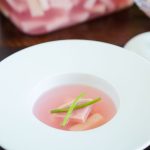
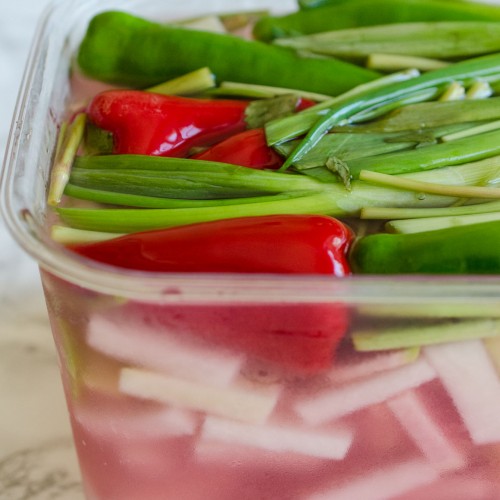

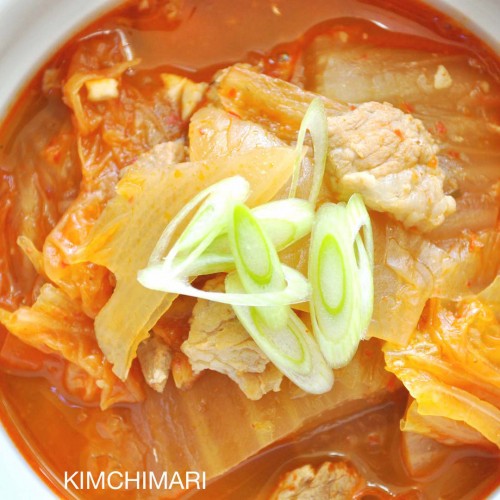

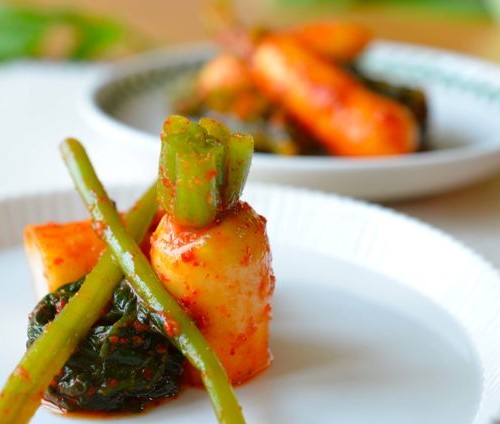
















Where do you find the watermelon radish? I could not even find this at the Korean market.
I bought it at Hmart but you can buy it at other stores – but it’s kind of a specialty produce so it may not always be available. Have you also tried whole foods? bTW, the watermelon radish is not a must. I just added it more for color. Good luck!
I have a curious question 🙂
I’ve recently gotten into fermentation and this recipe seems – to me at least – to be just like any other brine-based lacto-ferment (especially since it seems to me that you’re using something similar to a 2 % salt brine). However, usually when fermenting this way, you’d leave it on the counter for at least a week to ferment.
What’s the reason for not doing this with kimchi? Even regular kimchi is only left for a day or two. Does it spoil or is there another reason? 🙂
The main reason for not doing it with Kimchi is that you want to slow down the fermentation so you can enjoy the kimchi before it sours too much. Unlike some other fermentations where you want it to fully ferment (like gochujang), you want to Kimchi during the process. If you left it out for a week, it would sour way too much and then will start to spoil which is not pleasant to eat. You leave it out to kick-start the fermentation but after that you want to ferment it slowly at a low temperature. Also, slow-fermenting this way allows better flavor to develop including a zingy flavor. Hope that helps.
Very informative and beautifully detailed photos inspire and encourage all of us – thank you!
You are too kind!! Thank you – I’m glad to hear that it’s encouraging!
After about 2 weeks in the fridge, the liquid turned a jelly consistency. Is this still safe to eat and do you know why that happened? Thanks for your help!
For several reasons, your kimchi can turn slimy or jelly like – due to either not enough salt, too much sugar, too hot a temperature when you let it ripen in the beginning. It is safe to eat and the sliminess may go away if it ripens further. I wrote an post about it – hope this helps – https://kimchimari.com/slimy-kimchi-reasons-why-how-to-prevent-it/
Good luck.
I’m growing 미나리 this summer, in part inspired by this recipe (which I love)! in my last batch, I didn’t have it, but added cubes of seedless cucumber (the kind with the really thin skin), extra pear (some peeled and cut into chunks — it’s so good and stays really crisp this way), extra ginger (I minced it and put it in a tea ball to flavor everything) and a bit less garlic. I love it! it settles my stomach like nothing else and is so delicious in this hot weather. the broth is the best part. my housemate likes to have this as dessert, though I really don’t make it that sweet!
Oh wow! I never thought to grow 미나리 yet – I should. I am so delighted to hear that my recipe inspired you to grow them. I am sure adding cucumber will add extra flavor of freshness. Yes, as I noted in the post, radish water kimchi had enzymes that help with digestion so you have it so right – it will definitely help with your stomach. I love the story of your housemate enjoying water kimchi as dessert! How fun! Thank you so much Diane for sharing this. It just totally makes my day or night! haha.. Cheers!!
Would it be ok to skip the water dropwort?
I can’t seem to find it anywhere around here.
Thank you for your time in advance. 🙂
Hi MK! Sure you can skip it. It does add a bit of extra flavor but you can totally make it without it. Good luck!